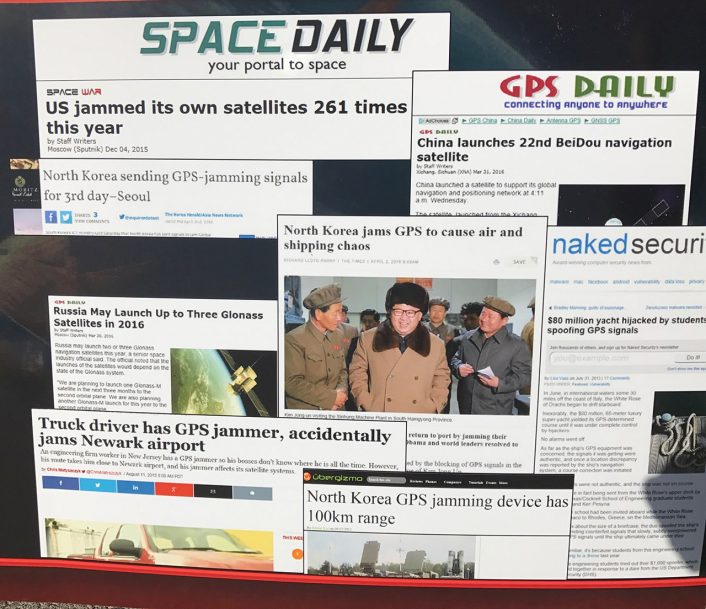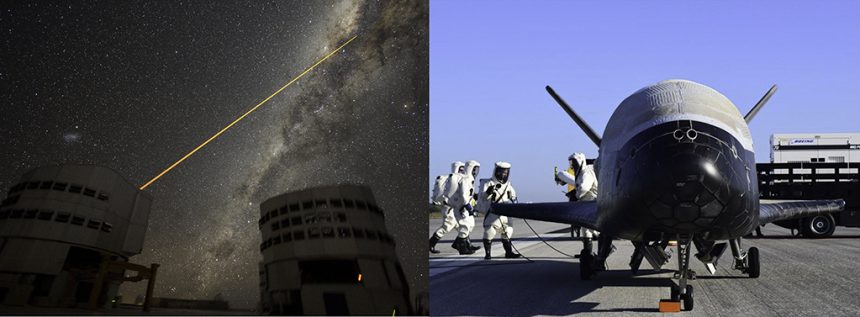Space May Be the “Final Frontier” Of a New Global Conflict Among Superpowers.
U.S. President Donald Trump launched a thousand memes when he announced the creation of a new military branch, a “U.S. Space Force” during a meeting of the National Space Council at the White House on Monday, June 18, 2018. The President told reporters that the new U.S. Space Force would become the sixth branch of the military to exist alongside but separately from the Air Force, Army, Marines, Navy and Coast Guard.
While President Trump’s announcement was received with humor and cynicism across social media, the formation of a U.S. military space force separate from and in addition to the existing five military branches is a credible and potentially overdue evolution for the U.S. military.
Since the first satellite, Sputnik 1, was placed in orbit by the former Soviet Union on October 4, 1957 over 8,000 objects have been launched into space. According to the Union of Concerned Scientists in a 2017 report, there were 1,738 operational satellites orbiting the earth at various altitudes broken into four categories; Low Earth Orbit, Medium Earth Orbit, Elliptical and Geosynchronous. Of those satellites, 159 are registered as “military” while an additional 150 are “government”. There are over 470 civilian satellites in orbit that provide everything from weather reconnaissance to communications.
Any disruption in vital space capabilities such as the six different national GPS constellations in orbit would have vast security and economic implications and present a significant vulnerability. Currently the U.S., Japan, Russia, China, the E.U. and India have GPS satellite constellations in orbit. These satellite constellations provide both vital commercial and military services ranging from civilian air transport to banking.

Since the Army launched the first successful U.S. satellite, Explorer 1, on January 31, 1958 it is as if the United States has built a new colony in space with limited or no provision for security. This has created a significant and expanding vulnerability given our increasing reliance on space-based assets both commercial and military.
Since the late 1950’s the responsibility for space defense operations, including reconnaissance and signals intelligence, missile defense, treaty compliance verification and other defense oriented space operations has largely been on the U.S. Air Force. But as the Air Force confronts its own challenges with pilot shortages and fiscal concerns attendant to an increasingly complex and evolving mission, asking them to secure outer space in addition to inner space would necessitate a massive expansion in both budget and capabilities.
The current U.S. government space agency, NASA, is now operating on about the same budget as they had in 1960, with consistent declines in NASA funding since its peak in 1966 when NASA accounted for nearly 5% of the U.S. federal budget. Today NASA uses less than 1% of the federal budget as reliance on private commercial and military space operations has expanded. Despite this drastic reduction in government spending in space set against the backdrop of expanding reliance on space assets there remains no exclusive force to secure the outer space theater of operations.
Historically, the precedent for the formation of a U.S. Space Force is analogous to how the U.S. Air Force was started. Formed after WWII as a result of the 1947 National Security Act, the Air Force was previously a part of the U.S. Army. But as reliance on air power expanded, the missions became more complex and other nations developed an increasing level of commensurate air power the necessity for a separate force dedicated to air power became significant. It’s also important to acknowledge that despite the formation of a dedicated sir force separate from other branches, the Army, Navy, Marines and Coast Guard each retained their own indigenous air component exclusive to themselves. It’s likely the evolution of the U.S. Space Force will have a similar relationship with the other forces.
In the current battlespace, countries like China have developed anti-satellite weapons that could threaten international and U.S. space assets. In January 2007, the Chinese conducted an anti-satellite weapons test that successfully destroyed one of their own target satellites in orbit. The U.S. and Russia has demonstrated a similar capability as early as the 1980’s.
Since the first flight of the secretive X-37B on April 22, 2010, there have been many theories about what the role of the spacecraft may be. The first is that the X-37B is a space-based weapons platform: the spacecraft is pre-deployed into orbit armed with some type of weaponized re-entry vehicle that could be released over or near a specific target. It may also be a weapons delivery vehicle deployed in defense of space-based commercial assets such as the GPS satellite constellation. Although this theory is debunked by most analysts since, most likely, the platform is just a test bed for deploying satellites and servicing them robotically in space or a new intelligence gathering asset, the project itself reaffirms the interest of the U.S. military for space.
While the social media space received the announcement of a new U.S. Space Force with pointed humor and cynicism the reality is that a dedicated U.S. Space Force is likely overdue. There is an expanding need for a dedicated security asset in this rapidly expanding and largely unsecured environment. Hopefully this new U.S. Space Force can address that evolving need.
Top image: composition created with Wiki/U.S. Air Force photos









